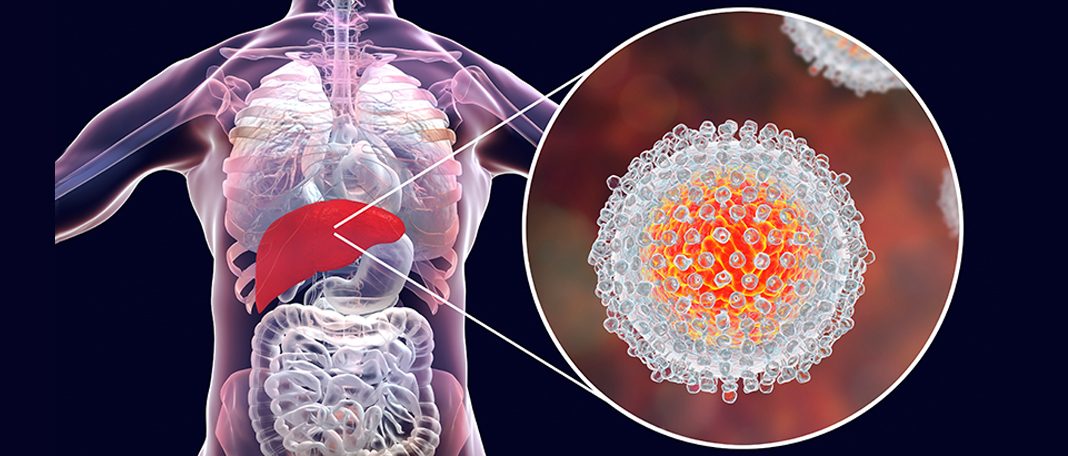There are millions of people in the world who are not aware of being infected with viral hepatitis A, B, C, D, E. Find the difference, causes, symptoms, treatments, and more.
What Is Hepatitis?
Hepatitis is a viral infection that infects the liver. The hepatitis virus is found in human feces and is transmitted either through the consumption of contaminated food, drinks, or through sexual intercourse.
Where Does Hepatitis Come From?
Fossil results have proven that hepatitis viruses have been around during the era of dinosaurs but infected only birds and small mammals. Though hepatitis is usually transmitted from person to person, in rare cases, hepatitis can also occur as an auto-immune disease.
Which Hepatitis Is Bad?
Hepatitis A, B, and C are considered the most common and dangerous types. There is no cure for Hepatitis B and infected individuals usually recover by themselves. The risk of developing a chronic inflammatory liver condition is high after contracting Hepatitis B and C.
What Organ Is Involved with Hepatitis?
Hepatitis affects only the liver. It may cause inflammation or damage the liver cells completely. This, in turn, makes the liver vulnerable to cancer, fibrosis, cirrhosis (scarring), and liver failure.
Viral Hepatitis Symptoms
The common symptoms of viral Hepatitis A, B, C, D, E are:
- Fatigue and joint pain
- Flu-Symptoms
- Dark urine
- Pale and clay-like stools
- Jaundice symptoms
- Sudden weight loss
- Loss of appetite
- Abdominal pain near the liver
Viral Hepatitis Treatments
Currently, there are no treatments that can give a complete cure for hepatitis A, B, C, D, E. HAV, and HEV usually clear by themselves over a period of time anywhere from 6 months to a year. Treatments for HBV and HCV would reduce the viral load drastically. Though HDV seems to clear by itself, treatment is required to prevent it from developing into a chronic condition.
Which of the Following Foods Is Best Known to Transmit Hepatitis?
The common ways you can contract viral hepatitis from consuming contaminated food and water are by:
- Eating unpeeled vegetables and fruits
- Undercooked food from fast food joints and restaurants
- Consuming ice made out of contaminated water
- Shellfish
What Is the Difference Between Viral Hepatitis A, B, C, D, E?
The basic difference between the types of viral hepatitis according to CDC are:
| Differences | Hep A | Hep B | Hep C | Hep D | Hep E |
| Medical Name | HAV | HBV | HCV | HDV | HEV |
| How Serious Is It? | Severe in people above 60 years | Deadly for people above 60 years | Acute infection causes lifelong damages | Lifelong damages and deadly | Deadly for pregnant women |
| How Common Is It in the U.S.? | Infection rates are increasing | Infection rates are stable | It is the most common type | Only immigrants have it at present | Americans who travel to infected regions have it |
| Incubation Period | 15 to 50 Days | 60 to 150 Days | 2 weeks to 6 months | 45 to 60 Days | 2 to 10 weeks |
| How Is Hepatitis Diagnosed? | Symptoms and blood tests | Blood tests, ultrasound, Transient elastography | Anti-HCV test and symptoms | HDV RNA test | Elimination test and travel history |
| Hepatitis Prevention | 2 doses of Vaccination, safe sex, and sanitization | Vaccination and serologic evaluation | Avoid contaminated needles | Hep B vaccines | Hep E vaccines are not approved by FDA yet |
| Hepatitis Treatment | Nutrition, fluid, and medical care | Antiviral medications | Direct-acting antiviral medications | Liver transplant | No treatment, supportive therapy can help |
| What are the chances of it becoming chronic? | Short-term | 2% to 6% | 70% | Less than 5% | Rare |
Who Is At Risk of Getting Hepatitis?
The risk of hepatitis getting severe increases with age but adults who are at risk involves:
- Homosexual men of infected sexual partners
- International travelers
- Individuals who use contaminated medical equipment like syringes to infuse drugs and other toxins.
- Alcoholics and homeless people
- Organ transplant receivers.
- Exposure due to occupation (Healthcare professional exposed to contaminated blood and other bodily fluids)
- Pregnant women (the child is also at risk) and HIV patients
- People who may share food and water with immigrants, international adoptees, etc.
Getting vaccinated, practicing safe sex, being aware of the source of food and water consumed, getting tested within 2 weeks of exposure are a few ways to prevent Hepatitis A, B, C, D, E infections.
















